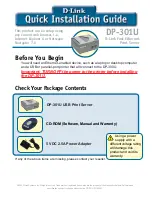
Chapter 3
Managing Disk Volumes
59
3. To delete the volume, type the following command:
For example:
In the event that the RAID volume is an IS volume, the deletion of the RAID volume
is interactive, for example:
The deletion of an IS volume results in the loss of all data that it contains. As an
alternative, you can use the
–f
option to force the deletion if you are sure that you
no longer need the IS volume, or the data it contains. For example:
4. To confirm that you have deleted the RAID array, type the following command:
For example:
For more information, see the
raidctl
(1M) man page.
#
raidctl -d
mirrored-volume
#
raidctl -d c0t0d0
RAID Volume ‘c0t0d0’ deleted
#
raidctl -d c0t0d0
Deleting volume c0t0d0 will destroy all data it contains, proceed
(yes/no)? yes
Volume ’c0t0d0’ deleted.
#
#
raidctl -f -d c0t0d0
Volume ’c0t0d0’ deleted.
#
#
raidctl
#
raidctl
No RAID volumes found
Summary of Contents for SPARC Enterprise T2000
Page 1: ......
Page 2: ......
Page 6: ......
Page 12: ...x SPARC Enterprise T2000 Server Administration Guide April 2007 ...
Page 14: ...xii SPARC Enterprise T2000 Server Administration Guide April 2007 ...
Page 20: ...xviii SPARC Enterprise T2000 Server Administration Guide April 2007 Reader s Comment Form ...
Page 22: ...xx SPARC Enterprise T2000 Server Administration Guide April 2007 ...
Page 66: ...44 SPARC Enterprise T2000 Server Administration Guide April 2007 ...
Page 88: ...66 SPARC Enterprise T2000 Server Administration Guide April 2007 ...
Page 92: ...70 SPARC Enterprise T2000 Server Administration Guide April 2007 ...
Page 97: ......
Page 98: ......
















































